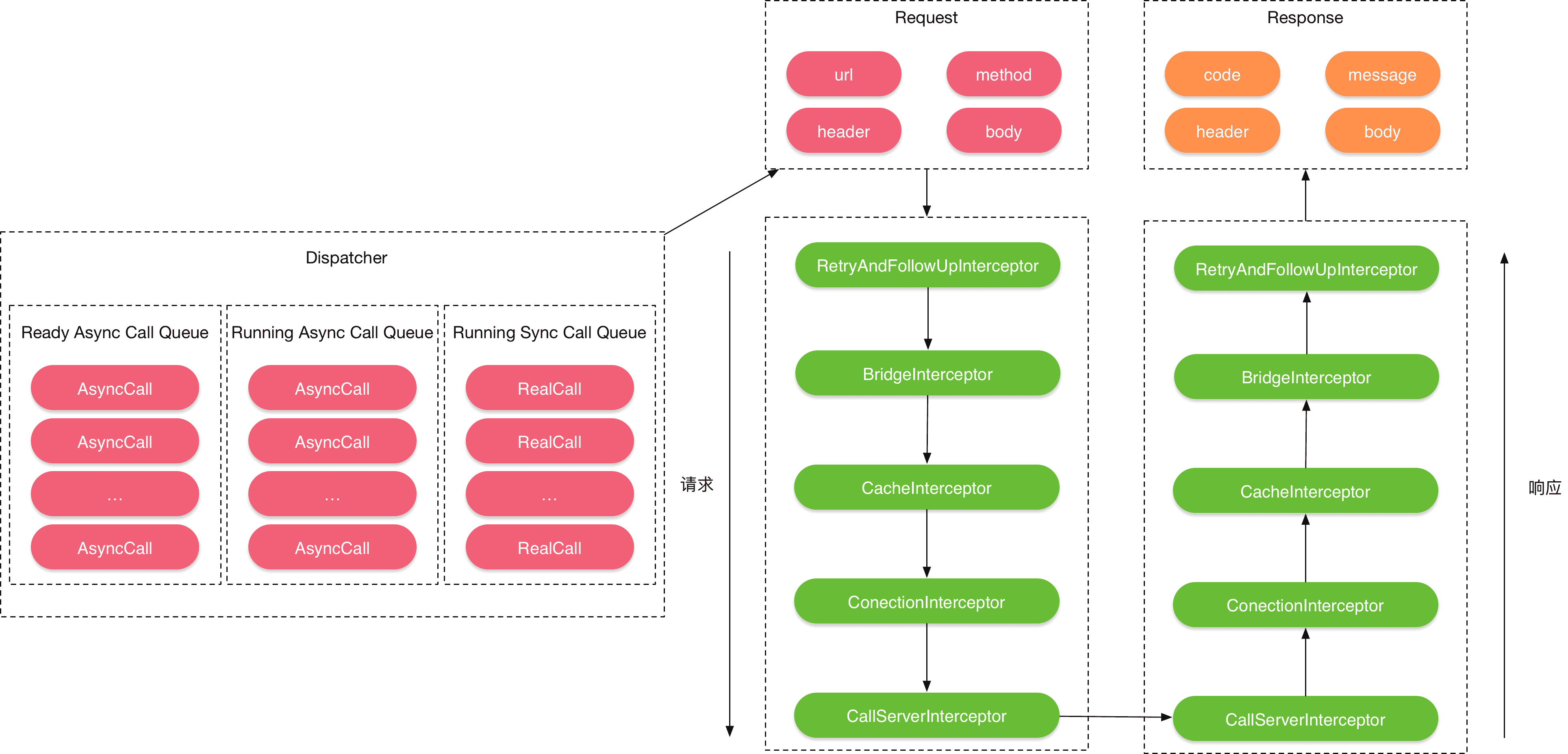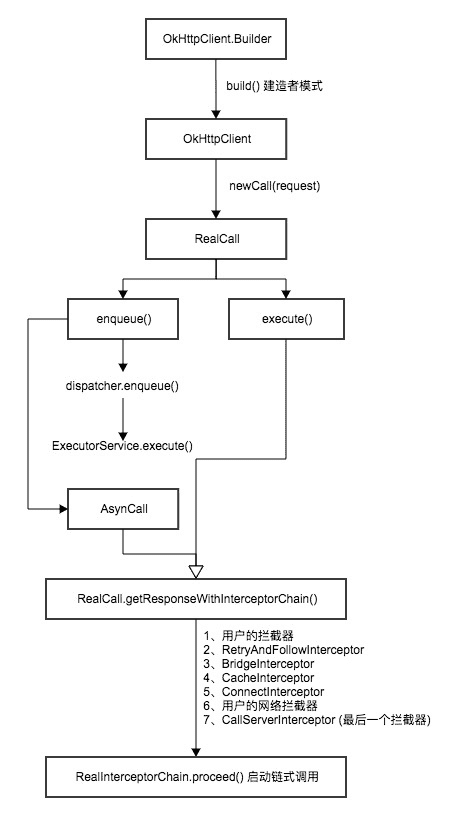OkHttp原理
原文:https://www.songma.com/news/txtlist_i28215v.html
使用
1、okhttp工作的大致流程
1.1、整体流程
(1)、当我们通过OkhttpClient创立一个okHttpClient 、Request 、Call,并发起同步或者异步请求时;
(2)、okhttp会通过Dispatcher对我们所有的Call(RealCall实现类)进行统一管理,并通过execute()及enqueue()方法对同步或者异步请求进行执行;
(3)、execute()及enqueue()这两个方法会最终调用RealCall中的getResponseWithInterceptorChain()方法,从阻拦器链中获取返回结果;
(4)、拦截器链中,依次通过ApplicationInterceptor(应用拦截器)、RetryAndFollowUpInterceptor(重定向阻拦器)、BridgeInterceptor(桥接阻拦器)、CacheInterceptor(缓存阻拦器)、ConnectInterceptor(连接阻拦器)、NetwrokInterceptor(网络拦截器)、CallServerInterceptor(请求阻拦器)对请求依次处理,与服务的建立连接后,获取返回数据,再经过上述阻拦器依次解决后,最后将结果返回给调用方。
提供两张图便于了解和记忆:
 okhttp整体流程1
okhttp整体流程1

okhttp整体流程2
1.2、各大阻拦器
getResponseWithInterceptorChain方法,也是整个OkHttp实现责任链模式的核心。
#RealCall
fun getResponseWithInterceptorChain(): Response {
//创建拦截器数组
val interceptors = mutableListOf<Interceptor>()
//添加应用拦截器
interceptors += client.interceptors
//添加重试和重定向拦截器
interceptors += RetryAndFollowUpInterceptor(client)
//添加桥接拦截器
interceptors += BridgeInterceptor(client.cookieJar)
//添加缓存拦截器
interceptors += CacheInterceptor(client.cache)
//添加连接拦截器
interceptors += ConnectInterceptor
if (!forWebSocket) {
//添加网络拦截器
interceptors += client.networkInterceptors
}
//添加请求拦截器
interceptors += CallServerInterceptor(forWebSocket)
//创建责任链
val chain = RealInterceptorChain(interceptors, transmitter, null, 0, originalRequest, this,
client.connectTimeoutMillis, client.readTimeoutMillis, client.writeTimeoutMillis)
...
try {
//启动责任链
val response = chain.proceed(originalRequest)
...
return response
} catch (e: IOException) {
...
}
}拦截器作用:
ApplicationInterceptor: 应用拦截器,通过addInterceptor添加,拿到的是原始请求,可以添加一些自定义header、通用参数、参数加密、网关接入等等。
RetryAndFollowUpInterceptor:重试和重定向拦截器,处理错误重试和重定向
BridgeInterceptor:桥接拦截器,主要工作是为请求添加cookie、添加固定的header,比如Host、Content-Length、Content-Type、User-Agent等等,然后保存响应结果的cookie,如果响应使用gzip压缩过,则还需要进行解压。
CacheInterceptor:缓存拦截器,如果命中缓存则不会发起网络请求。
ConnectInterceptor:连接拦截器,内部会维护一个连接池,负责连接复用、创建连接(三次握手等等)、释放连接以及创建连接上的socket流。
NetworkInterceptors:网络拦截器,用户自定义,通常用于监控网络层的数据传输。
CallServerInterceptor:网络请求拦截器,在前置准备工作完成后,真正发起了网络请求。
至此,OkHttp的核心执行流程就结束了,是不是有种豁然开朗的感觉?



